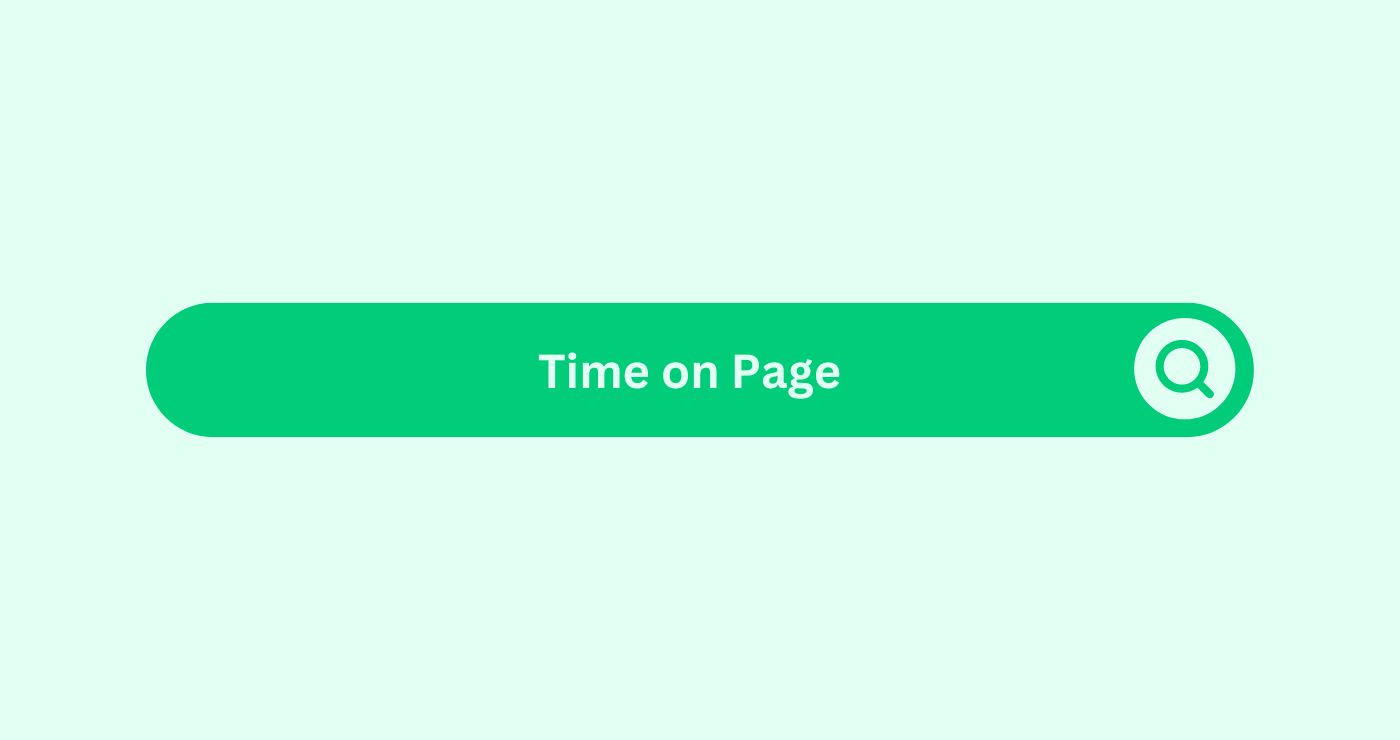Definition
In the realm of SEO, time on page refers to the average amount of time a user spends actively viewing a specific webpage on your website. It’s typically measured in seconds and calculated by most website analyticsDefinition In SEO, analytics involves collecting, measuring,... tools. Time on a page is a valuable indicator of user engagementDefinition Engagement in content marketing refers to the deg.... Generally, a longer time on the page suggests users are finding your content interesting and delving deeper, while a low time on a page might indicate the content is irrelevant, confusing, or lacks depth. By analysing time on page alongside other metricsWhat are Metrics in the context of SEO? Metrics in SEO refer..., you can gain valuable insights into your website’s content performance and make informed decisions to improve user engagementDefinition Engagement in content marketing refers to the deg... and ultimately, SEO effectiveness.
How You Can Use Time on Page
Imagine you have a website dedicated to travel photography. Analysing time on a page can be incredibly insightful. If users are spending minimal time on your photo galleries, it might indicate the images are underwhelming or lack context. By analyzing time on page alongside other metricsWhat are Metrics in the context of SEO? Metrics in SEO refer... like bounce rateDefinition Bounce Rate in social media marketing refers to t... and scroll depthDefinition Scroll depth, in the context of SEO, measures how..., you can identify areas for improvement. Perhaps incorporating captivating captions, adding location information to photos, or embedding interactive maps alongside your images can entice users to spend more time exploring your content.
5 Key Takeaways
- High time on page indicates user engagementDefinition Engagement in content marketing refers to the deg.... Users actively consuming your content typically spend more time on the page.
- Low time on page suggests areas for improvement. Content that users quickly abandon might be poorly structured, lack visuals, or fail to address user intent effectively.
- Consider time on page alongside other metricsWhat are Metrics in the context of SEO? Metrics in SEO refer.... Bounce rateDefinition Bounce Rate in social media marketing refers to t... and scroll depthDefinition Scroll depth, in the context of SEO, measures how... provide additional context for understanding user behavior.
- Optimise content to encourage longer engagementDefinition Engagement in content marketing refers to the deg.... Break down lengthy content, incorporate compelling visuals, and use internal linkingWhat is Internal linking? Internal linking refers to the pra... to create a more engaging experience.
- Track time on page over time to monitor the effectiveness of changes. Analyze how adjustments to your content impact user engagementDefinition Engagement in content marketing refers to the deg....
FAQs
What is a good average time on page?
There's no one-size-fits-all answer. It depends on your content type. Aim for a time on page that reflects the typical depth of engagementDefinition Engagement in content marketing refers to the deg... for your content.
How is time on page calculated?
Website analyticsDefinition In SEO, analytics involves collecting, measuring,... tools like Google AnalyticsDefinition In SEO, analytics involves collecting, measuring,... calculate time on page by measuring the difference between the time a user lands on a page and the time they navigate away.
Does time on page directly impact SEO ranking?
Time on page isn't a direct ranking factor, but it is an indicator of user experience, which Google prioritizes. High time on page can suggest users are finding your content valuable, potentially leading to better rankings.
How does time on page differ from bounce rate?
Bounce rateDefinition Bounce Rate in social media marketing refers to t... measures the percentage of visitors who leave a website after viewing only one page. Time on page goes beyond initial page views, indicating how much content users engage with on a single page.
Can time on page be misleading?
Yes. If your website has a lot of short, superficial content, high time on page might be misleading. Focus on creating informative and engaging content that encourages users to delve deeper.
What other metrics can I consider alongside time on page?
Scroll depthDefinition Scroll depth, in the context of SEO, measures how..., bounce rateDefinition Bounce Rate in social media marketing refers to t..., and conversion rateDefinition Conversion Rate in the SEO space refers to the pe... offer additional insights into user behavior and content effectiveness.
How can I improve content based on time on page data?
Analyze which sections of your content have high and low time on page. Focus on improving low-performing sections with better formatting, visuals, or addressing user intent more effectively.
Should I track time on page for different content types?
Absolutely! Scroll depthDefinition Scroll depth, in the context of SEO, measures how... expectations will vary for short blog posts compared to in-depth travel guides. Track time on page for different content types to identify areas for improvement.
How often should I track time on page?
Monitor time on page regularly to identify trends and track the effectiveness of content optimization efforts. Consider weekly or bi-weekly monitoring.
Can time on page data be used for A/B testing?
Yes! Use time on page data to identify areas for improvement and then A/B test different content variations to see which versions encourage users to spend more time engaged with your content.




